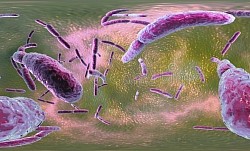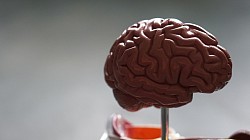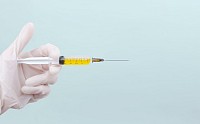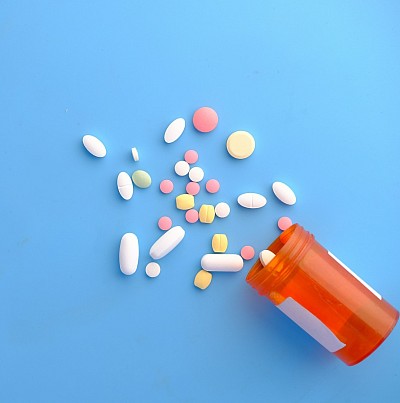Knowledge Share
Gut Health & Whole-Body Well-Being
The gut is a major hub of health: roughly 70 % of the immune system resides there, and its microbial community (the gut microbiome) includes about 100 trillion microorganisms that influence digestion, metabolism, immunity, and even brain function. Disruptions in this community can alter how nutrients are processed, how the nervous system communicates, and can contribute to chronic conditions such as depression, anxiety, obesity, diabetes, and hypertension.
Emerging research has identified five common gut-disrupting factors that can compromise microbial balance and metabolic health:
-
Artificial sweeteners (e.g. saccharin, sucralose) — Some studies show these can shift gut microbial composition and induce glucose intolerance in both animals and human samples. Nature+2PMC+2
- Dietary emulsifiers (e.g. polysorbates, carboxymethylcellulose) — These additives may disrupt the mucosal barrier and promote low-level inflammation by altering microbial communities. BioMed Central+2Frontiers+2
- High refined sugar intake — Diets rich in simple sugars can favor bacteria that thrive on sugar, reducing diversity of beneficial strains and contributing to metabolic dysregulation. Seed+1
- Ultra-processed foods with multiple additives — The combination of preservatives, dyes, stabilizers, and sweeteners can exert synergistic negative effects on gut health. blv.admin.ch+2PMC+2
- Excessive intake of sugar alcohols or low-digestible sweeteners — While less disruptive than synthetic sweeteners in some studies, they can still alter microbial networks and reduce diversity. Frontiers+1
Key message: A disrupted gut microbiome is increasingly linked to autoimmune and chronic diseases (diabetes, obesity, hypertension). Treat your gut carefully by choosing whole, minimally processed foods, avoiding artificial additives, and supporting microbial health through fiber, plant variety, and clean nutrition.
Considering Weight Loss Shots: Risks, Benefits, and Hormonal Impact on Weight Management
The Risks and Benefits of New Weight-Loss Shots and the Role of Hormones in Weight Gain
Weight-loss injections such as semaglutide (Ozempic®, Wegovy®) and tirzepatide (Mounjaro®, Zepbound®) mimic natural gut-derived hormones that signal fullness between the intestine and brain. These medications have changed obesity care, offering medically supervised weight reduction for many people—but, like any therapy, they come with both benefits and limitations.
Benefits Backed by Research
Clinically proven weight loss: Trials such as STEP-4 (JAMA, 2021) show average loss of 5 – 15 % of starting weight after about a year of consistent use. Improved metabolic markers: Many participants experience lower A1C, improved blood pressure, and better cholesterol profiles. Appetite and craving control: By enhancing GLP-1 and GIP signaling, these drugs slow stomach emptying and reduce appetite.
Known Risks and Limitations
Digestive side effects: Nausea, bloating, constipation, or diarrhea occur in roughly one-third of users. These stem from slowed gut motility, not toxicity. Plateau effect: Studies note that weight often stabilizes around 60–68 weeks of use; maintenance depends on ongoing therapy and lifestyle change. Expense and access: Monthly costs can exceed $900 without insurance. Possible microbiome impact: Early studies suggest prolonged GLP-1 agonist use may modestly alter gut bacteria diversity—though clinical significance remains uncertain. Relapse risk: Discontinuing the drug without addressing nutrition, activity, and stress hormones often leads to partial weight regain within months.
Hormones and Weight Regulation
Weight gain is rarely just about calories. Hormones such as insulin, cortisol, estrogen, progesterone, thyroid hormones, and leptin influence fat storage, appetite, and metabolism.
Conditions like PCOS or hypothyroidism can shift these hormones, making weight management harder. Testing and correcting these imbalances—through nutrition, sleep optimization, and targeted therapy—often restore healthy metabolism.
Restoring the Gut–Hormone Connection
Because GLP-1 and related hormones originate in the small intestine, gut health plays a major role in how well weight-loss medications and natural hormones function.
Evidence from Nature (2014), Frontiers in Microbiology (2025), and other peer-reviewed journals links gut-microbiome disruption with mood changes, inflammation, and metabolic slowdown.
Common disruptors include:
Artificial sweeteners (sucralose, saccharin) Emulsifiers in processed foods Excess refined sugar Overuse of antibiotics Chronic stress and sleep deprivation
Repairing the gut through a fiber-rich diet, fermented foods, prebiotic vegetables, and reduced processed additives may improve both digestion and hormonal signaling.
🩺 Functional Medicine: A Root-Cause Approach
At Resolution Natural-Wellness, we combine advanced saliva and urine hormone testing with gut-microbiome evaluation to design precision plans that address:
Hormonal imbalances (thyroid, cortisol, sex hormones) Gut integrity and inflammation Personalized nutrition and peptide support Sustainable exercise and stress management
When the gut and hormones work together, weight loss becomes more natural—and far more sustainable.
References
Centers for Disease Control and Prevention (CDC). “Losing Weight.” 2023. cdc.gov/healthyweight/losing_weight Rubino D et al. JAMA 2021; 325(14): 1414-1425. doi:10.1001/jama.2021.3224 Suez J et al. Nature 2014; 514: 181–186. Microbiome Journal 2020; 8: 159. Frontiers in Microbiology 2025; 16: 1054.
Vitamin D: Essential Hormone for Immune Support and Overall Health Benefits
Vitamin D is far more than a “vitamin” — it functions like a hormone, with wide-ranging effects throughout the the body. Below is a clear, integrated explanation of how it works, what influences your levels, and why it matters for your health.
What Vitamin D Does
Immune regulation: Vitamin D modulates both innate (natural) and adaptive (acquired) immune responses, helping your body defend against pathogens while reducing excessive inflammation. Bone & muscle health: It regulates calcium and phosphorus levels, ensuring strong bones, proper muscle contraction, and neuromuscular function. Multi-system support: Because vitamin D receptors exist in many tissues, vitamin D influences cardiovascular health, mood regulation, metabolic function, and cell growth.
How Vitamin D Is Produced and Activated
Sunlight route: Ultraviolet B (UVB) rays from sun exposure convert a form in the skin (pre-vitamin D3) → vitamin D3 (cholecalciferol). Liver conversion: The liver converts vitamin D3 to 25-hydroxyvitamin D [25(OH)D], the form measured in blood — though still inactive. Kidney activation (and other tissues): Kidneys (and other tissues) convert 25(OH)D to the active form, 1,25-dihydroxyvitamin D [1,25(OH)₂D], which binds vitamin D receptors and triggers effects. Dietary absorption: Dietary vitamin D (D₂ or D₃) is absorbed in the small intestine via fat-dependent mechanisms (packaged into chylomicrons → lymphatic system → bloodstream).
Because it is fat-soluble, vitamin D is stored in fat tissue and is better absorbed when taken alongside healthy fats.
Factors That Influence Vitamin D Levels
Your vitamin D status depends on multiple interacting factors:
Sun exposure & latitude / season (less UVB exposure in northern or winter months) Skin pigmentation (more melanin reduces UV conversion) Body fat (excess adipose tissue can “sequester” vitamin D, lowering circulating levels) Liver or kidney function (impaired conversion steps) Gastrointestinal changes or surgeries (e.g. gastric bypass) Age and absorption efficiency (gut absorption may decline with age)
Consequences of Vitamin D Deficiency
Low vitamin D levels are common and have been associated with a variety of health concerns, including:
Weight gain or difficulty losing weight Sleep disturbances (e.g. poor sleep quality) Mood disorders such as depression Cardiovascular disease Autoimmune conditions Increased cancer risk in some studies Greater susceptibility to infections (in one meta-analysis, lower vitamin D correlated with higher risk of COVID-19 infection)
When and How to Supplement
Because food sources of vitamin D are limited (e.g. fatty fish, fortified dairy), sunlight alone is often insufficient, especially for indoor lifestyles. Testing blood levels (25[OH]D) is essential before supplementing, so you know your baseline and target. Supplementation may be appropriate when deficiency or insufficiency is confirmed. A qualified practitioner should monitor dosing and levels to avoid excessive vitamin D, which can cause toxicity (hypercalcemia).
References for further reading / fact-checking:
Nair R, Maseeh A. “Vitamin D: The ‘sunshine’ vitamin.” J Pharmacol Pharmacother. 2012;3(2):118–126. doi:10.4103/0976-500X.95506 Teshome A et al. “The Impact of Vitamin D Level on COVID-19 Infection: Systematic Review and Meta-Analysis.” Frontiers in Public Health. 2021 Mar;9:624559. doi:10.3389/fpubh.2021.624559
Herbs & Nutrition: Benefits of Including Healing Herbs and Micronutrients in Your Diet
Should I Include Herbs and Supplements in My Diet?
Including macronutrients such as fats, carbohydrates, and proteins often feels simple. But creating the right balance of micronutrients — vitamins, minerals, and trace elements — can be more challenging. Micronutrients are essential for energy production, hormone balance, immunity, and cellular repair.
While fruits and vegetables provide many of these nutrients, herbs and spices are a powerful yet often overlooked source of both micronutrients and natural healing compounds. Many have been used for centuries to support wellness, and modern science continues to validate their health benefits.
Healing Herbs & Their Benefits
Incorporating a variety of herbs and spices into your meals can support both your nutrient intake and your body’s natural healing systems:
Turmeric: Contains curcumin, a potent anti-inflammatory compound that may ease joint pain, support digestion, and improve mood.
Basil: A strong antioxidant and natural adaptogen that supports stress resilience and immune function. Rich in vitamin A, K, calcium, and manganese.
Black Pepper: Enhances nutrient absorption, especially for curcumin and beta-carotene, and supports digestion.
Cinnamon: Helps regulate blood sugar and provides iron, calcium, and magnesium for energy balance.
Ginger: Reduces nausea, supports circulation, and aids digestion; shown to have anti-inflammatory and antioxidant effects.
Rosemary: Improves memory, circulation, and cognitive function; its rosmarinic acid may protect brain and heart health.
Ashwagandha: An adaptogenic herb known to reduce cortisol, improve sleep quality, and support thyroid function.
Did you know? Modern soil depletion and industrial farming practices can lower the nutrient strength of many herbs and vegetables compared to historical levels. This means even healthy eaters may not be getting as many minerals and phytonutrients as intended.
What About Supplements?
Supplements can play an important role when nutrient levels are low — for example, vitamin D, magnesium, or omega-3 fatty acids — or when diet and lifestyle alone can’t meet your needs. However, not all supplements are created equal.
Cheaper, mass-produced options often contain low-quality ingredients, artificial fillers, or poorly absorbed forms of vitamins and minerals. Functional medicine and nutraceutical brands typically use higher-grade, bioavailable ingredients that your body can actually use.
3 Tips for Choosing Quality Supplements
- Look for Third-Party Testing: Choose brands certified by NSF, USP, or ConsumerLab to ensure purity and potency. Check for Active/Bioavailable Forms: For example, methylated B-vitamins (methyl-B12, methylfolate) or magnesium glycinate instead of oxide.
- Avoid Excess Fillers: Skip products with artificial colors, titanium dioxide, or hydrogenated oils. Simpler ingredient lists are often better.
- Always consult a qualified healthcare provider before starting new supplements or herbs, especially if you’re on medication, pregnant, or have chronic health conditions.
Bringing It All Together
A healthy diet is more than just macronutrients — it’s a synergy of whole foods, herbs, and mindful supplementation that nourish the body and support natural balance. Herbs can enhance flavor and function, while quality supplements can fill nutritional gaps created by soil depletion, stress, or lifestyle demands.
At Resolution Natural-Wellness, we use a functional medicine approach to identify deficiencies through lab testing and design targeted nutrition plans that combine clean eating, herbal therapy, and clinically supported supplements for optimal health.
Eat the Rainbow: Benefits of a Colorful, Nutrient-Rich Diet for Gut Health and Overall Wellness
It’s simply eating a variety of whole fruits and whole vegetables ranging in all colors from purple cabbage to a yellow pair.
- The human gut microbiome requires a variety of nutrients to function properly. Including various fruits, vegetables, proteins, nuts, herbs, spices, and grains that help maintain the metabolizing process needed for a properly functioning body.
- A varying diet will ensure the body receives adequate amounts of fiber, potassium, magnesium, calcium, folate, iron, and vitamins A and C to name a few.
- Many people assume a diet of vegetables and fruit alone can cause a lack or excess of one or more macro-nutrients such as proteins; however, this is completely untrue.
- Different vegetables and fruits vary in the quantity of macronutrients and micronutrients but they all have their role in building the body’s health.
IV Hydration and vitamins
IV Vitamin Therapy vs. Oral Supplements — Based on Scientific Physiology
1. Superior Absorption: IV vitamins are delivered directly into the bloodstream, bypassing the gastrointestinal (GI) tract. Oral vitamins must be digested, and absorption rates can be as low as 10–30%, depending on gut health, digestive enzymes, and the presence of other nutrients or medications. IV absorption = near 100% bioavailability, especially critical for nutrients like B12, magnesium, and Vitamin C.
2. Immediate Effect: IV therapy offers rapid onset, ideal for fatigue, dehydration, immune support, or post-illness recovery. Oral supplements can take days to weeks to accumulate in the bloodstream to therapeutic levels.
3. Higher Doses with Safety: Some vitamins (like Vitamin C) cannot be taken in high doses orally due to GI upset or limited absorption. IV Vitamin C can be safely administered at much higher doses without the GI distress — and used therapeutically for inflammation and oxidative stress.
4. Bypasses GI Limitations: Beneficial for clients with: IBS, Crohn’s, malabsorption, or gastric bypass Older adults with reduced stomach acid or absorption Medication interactions that block nutrient uptake (e.g., PPIs, metformin)
5. Multi-Nutrient Synergy: IV drips deliver a controlled blend of nutrients together, allowing synergistic function (e.g., magnesium + B complex + Vitamin C for energy and immune support).
6. Hydration Bonus: IV drips rehydrate at a cellular level, which pills cannot do. Especially helpful for fatigue, migraines, jet lag, hangovers, or illness recovery.
Why IV? Because you deserve full absorption, fast results, and total hydration — all in one powerful session.
Feel it faster. Absorb it better. Choose IV therapy.
Pill Mill
Some older adults refer to a “pill mill” as a place where people receive pills but no cure. The words alone remit a cadence of repetitive hopelessness. One may ask, how can Americans have so much freedom but somehow missed the bus for top-tier healthcare. Unfortunately, it’s quite complicated and hovers around pharmaceuticals, finances, and industry.
Complaints
People have to get past expecting a quick fix, surgery, or pill to miraculously put everything back in place. In the past, practitioners have been reluctant to focus on diet and nutrition possibly due to lack of formal nutritional training or concern about patient willingness to make changes. Patients can no longer depend on the healthcare system to be solely responsible for their health and well-being. It is imperative that people become knowledgeable and involved past just being obedient in taking medication. In the recent pandemic, the key takeaways were chronic illness of obesity and hypertension had some of the highest death rates from Covid. Companies raced to produce vaccinations and treatment for Covid; however, no campaigns or laws were made to reduce the obesity, diabetes, or hypertension epidemic. To put things in perspective of pills and shots versus diet and nutrition - Obesity affects 19% of children and 42% of adults; Moreover, obesity costs the US health care system $147 billion a year (CDC, 2021).
The answer is …
It is obvious that pills and shots alone are not the answer. Conventional medicine should be used where it is appropriate and temporary if possible. Unfortunately, the temporary status is clearly seen when medication is stopped such as blood pressure medication or blood sugar medication, levels skyrocket to a new normal high. Good news! We are not hopeless and there are answers. The bigger question is are we willing as individuals to take actionable steps for change. Health without a doubt, starts at home with proper nutrition, stress-reduction, and exercise. Even the person that has already been diagnosed with a chronic illness still can achieve better health outcomes and less pills.
Resistant Hypertension
According to the American heart Association (2018), persons are considered to have resistant hypertension when they have the following:
- Hypertension despite the concurrent use of 3 antihypertensive drug classes.
- The three or more medications are administered at maximum or maximally tolerated daily doses.
- Patients meeting goal blood pressure parameters on 4 or more medications are considered to have resistant hypertension.
- “White coat” phenomenon has been excluded by monitoring home blood pressures that are above goal.
- Sleep Apnea - Increases stress hormones due to oxygen starvation causing high blood throughout the day.
Healthcare providers response:
- Identify contributing lifestyle factors (nutrition, alcohol, smoking)
- Detect other drugs that may interfere with blood pressure medication.
- Causes of secondary hypertension (sleep apnea and endocrine problems)
- Assessment organ damage (kidney failure, heart failure).
The examples listed in () are not all inclusive.
What should you do:
- Limit Salt to 2000-2400 mg daily (FYI:1 serving of spaghetti sauce 500 mg)
- Achieve 6-8 hours of uninterrupted sleep
- Weight loss: At least 5-7 % of current weight to start
- Exercise: 150 minutes per week for adults
- Lifestyle diet: Whole food plant-based (WFPBD), mediterranean diet, Dash diet (Remove saturated fats, Hidden salt, boxed/canned items)
Definitions:
- Hypertension: Blood pressure greater than 130/80.
- Goal: 120/80
- Antihypertensive: Against or a lowering high blood pressure.
- Antihypertensive drug classes: Calcium channel blocker (“pine”), angiotensin-renin blocker (“artans”) or angiotensin-converting enzyme inhibitor (“pril”) or angiotensin receptor blocker), and a diuretic (“Water-pill”).
A Health coach can assist you with meeting these achievable lifestyle changes and getting your blood pressure to goal. Even in people diagnosed with secondary causes of hypertension can better their outcomes with the strategic plan.
Reduce the Stress
Looking to embrace a happier, more organized life with reduced stress? You're in the right place! Check out these tips to enhance your mental and emotional well-being:
Organize Your Space: Create a system of organization to boost mental clarity. Studies highlight that a clutter-free environment positively impacts your overall well-being. Establishing planning habits helps shift behaviors, allowing you to focus on what truly matters.
Declutter Unnecessary Items: Let go of unnecessary possessions. Often, we hold onto objects to preserve memories, but true retention lies in experiences and emotional responses. Parting with old belongings can foster a positive outlook and significantly reduce stress.
Practice Forgiveness: Forgive those who have wronged you. Although challenging, forgiveness is a crucial step in stress reduction and preventing chronic illness. Holding onto anger and resentment can lead to the build-up of hormones like adrenaline and cortisol, negatively affecting your physical health.
Embrace Laughter: Laughing is a powerful stress-reducer. It not only brings joy to your spirit but also releases endorphins, promoting relaxation and relieving muscle tension.
Evaluate Relationships: Identify toxic relationships and set boundaries. Your mental and physical health should not be compromised for the sake of a friendship or family tie. It's crucial to distance yourself from negative influences.
Incorporate Meditation or Prayer: Integrate meditation or prayer into your daily routine. Research shows that these practices effectively reduce stress, pain, and anxiety. If you're unsure where to start, check out the link below for helpful tips.
Don't let stress dominate your life. Take proactive steps today and embark on a journey towards a happier, more balanced lifestyle.
Best Diets for Humans: A Guide to Healthy Eating
Introduction: Eating a healthy, balanced diet is essential for maintaining good health and preventing chronic diseases. There are several dietary patterns that have been shown to be beneficial for human health. Here's a guide to some of the best diets for humans:
Mediterranean Diet: This diet is based on the traditional eating patterns of people in Mediterranean countries. It emphasizes whole, minimally processed foods such as fruits, vegetables, whole grains, legumes, nuts, and seeds. Healthy fats such as olive oil and fatty fish are also emphasized. The Mediterranean diet has been shown to be beneficial for heart health, brain health, and overall longevity.
DASH Diet: The Dietary Approaches to Stop Hypertension (DASH) diet is designed to lower blood pressure and improve heart health. It emphasizes fruits, vegetables, whole grains, lean proteins, and low-fat dairy products, while limiting sodium and unhealthy fats.
Vegetarian or Plant-based Diet: This diet emphasizes plant-based foods such as fruits, vegetables, whole grains, legumes, and nuts, while limiting or eliminating animal products. Vegetarian diets have been shown to be beneficial for heart health, weight management, and overall longevity.
Flexitarian Diet: This is a flexible approach to eating that emphasizes plant-based foods but allows for occasional consumption of animal products. The Flexitarian diet has been shown to be beneficial for weight management and overall health.
Conclusion: Eating a healthy, balanced diet is essential for good health. These dietary patterns provide a framework for healthy eating that can be adapted to meet individual preferences and needs. Consult with a healthcare professional or a registered dietitian to determine the best dietary pattern for your individual needs
Dopamine Addiction: Understanding the Impact of Excess Dopamine Stimulation on Mental Health and Productivity
Discover the power of your brain's "natural drug" – dopamine. This neurotransmitter plays a crucial role in our daily lives, influencing pleasure, movement, satisfaction, motivation, mood, and memory. While essential for basic life functions, an excess of dopamine-triggering activities can impact mental health.
Unconscious engagement in repetitive and nonproductive tasks, such as endless social media scrolling, excessive video watching, constant coffee consumption, sugar intake, or overindulgence in seemingly "safe" habits, can have adverse effects. These activities may contribute to decreased concentration, heightened stress levels, attention deficit disorders, and increased procrastination.
Interested in enhancing concentration, reducing stress, and breaking free from detrimental habits? Consider taking a break from dopamine-promoting activities. For a deeper understanding, check out "Dopamine Detox" by Thibaut Meurisse. It's time to prioritize your mental well-being and cultivate healthier habits.















